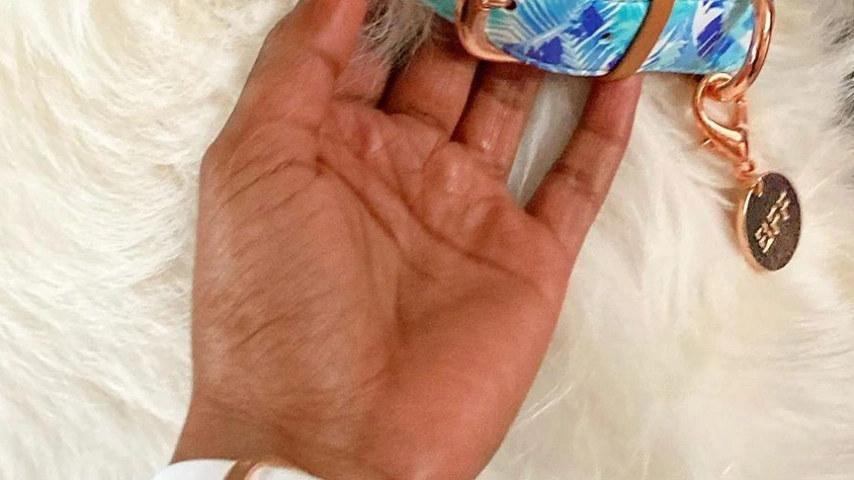Dog / Detail
Understanding the Female Dog's Heat Cycle: A Scientific Overview
Jonathan Bennet | 04 September 2024 | 12:05
The female dog's heat cycle, also known as estrus or season, is a recurring period of reproductive activity characterized by hormonal changes that prepare her for mating.
This natural process is essential for dogs to reproduce and maintain their species.
The female dog's heat cycle is a natural process that plays a vital role in reproduction. By understanding the stages of the heat cycle, the factors that affect it, and the necessary preparations, you can ensure your dog's well-being and prevent unwanted pregnancies.

The heat cycle is primarily regulated by two hormones: estrogen and progesterone. Estrogen levels rise during the early stages of the cycle, causing the female dog to become receptive to males. Progesterone levels then increase, preparing the uterus for pregnancy if mating occurs.

The heat cycle typically consists of four distinct stages:
- Proestrus: This is the initial stage, characterized by a gradual increase in estrogen levels. The female dog may exhibit signs of restlessness, such as increased urination or licking her vulva. She may also attract male dogs with her scent, but she is not yet receptive to mating.
- Estrus: This is the fertile stage of the cycle, when the female dog is most receptive to mating. Her vulva becomes swollen and red, and she may exhibit a characteristic posture known as "flagging," where she raises her tail and lowers her hindquarters.
- Metestrus: This stage follows estrus and is characterized by a decline in estrogen levels and a rise in progesterone. The female dog's receptivity to mating decreases, and she may become more aggressive towards males.
- Anestrus: This is the resting period between heat cycles, when the female dog is not receptive to mating. Hormone levels are low during this stage.

The frequency and duration of heat cycles can vary among individual dogs. Most dogs experience their first heat cycle between six months and two years of age. The average cycle length is typically around three weeks, but it can range from two to four weeks.
Factors Affecting the Heat Cycle
Several factors can influence the timing and duration of a dog's heat cycle, including:
- Breed: Some breeds are known to have more frequent or less frequent heat cycles than others.
- Health: Certain health conditions can affect the heat cycle, such as hypothyroidism or ovarian cysts.
- Nutrition: A balanced diet can help ensure a healthy heat cycle.
- Environmental factors: Stress or changes in the environment can sometimes disrupt the heat cycle.

Preparing for the Heat Cycle
If you have a female dog, it's important to be prepared for her heat cycle. Here are some tips:
- Spaying: Consider spaying your dog to prevent unwanted pregnancies and eliminate the risk of heat cycles.
- Supervision: If you choose not to spay your dog, closely supervise her during her heat cycle to prevent unwanted matings.
- House training: Be patient with your dog during her heat cycle, as her hormonal changes may temporarily affect her house training.
- Veterinary care: Schedule regular veterinary check-ups to monitor your dog's health and ensure a smooth heat cycle.

Understanding Male Dog Behavior
Male dogs are naturally attracted to female dogs in heat. They may exhibit increased interest in females, become more territorial, or attempt to mount or hump objects. It's important to understand these behaviors and take appropriate measures to prevent unwanted matings.
Preventing Unwanted Pregnancies
If you have a male dog and want to prevent unwanted pregnancies, consider the following options:
- Neutering: Neutering your male dog will prevent him from impregnating females.
- Supervision: Closely supervise your male dog during your female dog's heat cycle to prevent him from mating.
- Behavioral training: Train your male dog to respond to commands and avoid unwanted behaviors.
Related
-

The Healing Power of Dogs: How Canine Therapy is Revolutionizing Mental Health and Boosting Positive Energy in Humans
Dog14 November 2024
-

A Pawsitive History: Dogs of Nuremberg
Dog09 November 2024
-

The Role of Oxytocin in the Human-Dog Bond: The Science Behind Our Deep Connection
Dog06 November 2024
-

Beyond the Beach: Jamaica's Dog Lovers
Dog29 October 2024
-

A Dog's Delights: Homemade Snacks for Our Furry Babies, Recipes Included!
Dog29 October 2024
-

A Dog's Disorientation: Understanding Your Dogs' Wanderlust
Dog29 October 2024
Popular
-

-

A Pawsitive History: Dogs of Nuremberg
09 November 2024 -

-

Beyond the Beach: Jamaica's Dog Lovers
29 October 2024 -
